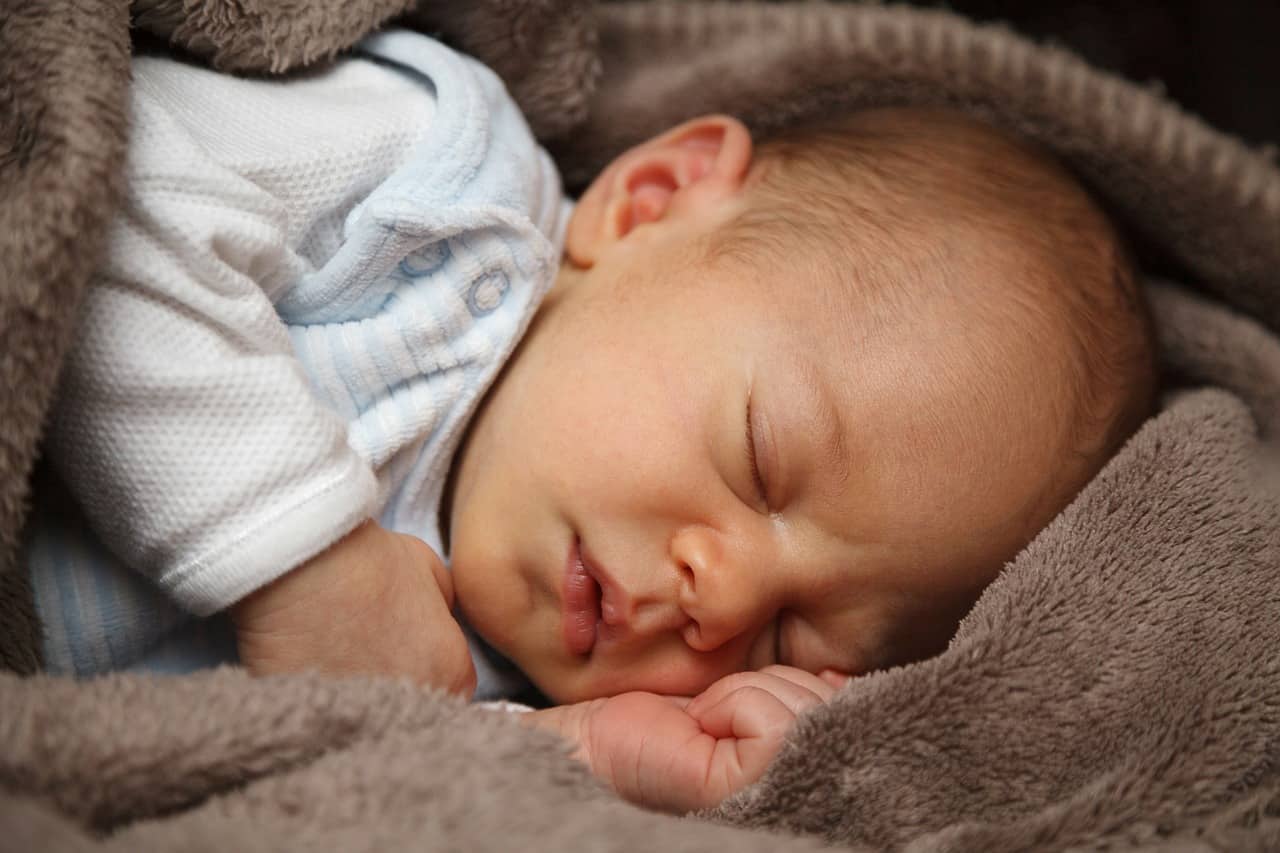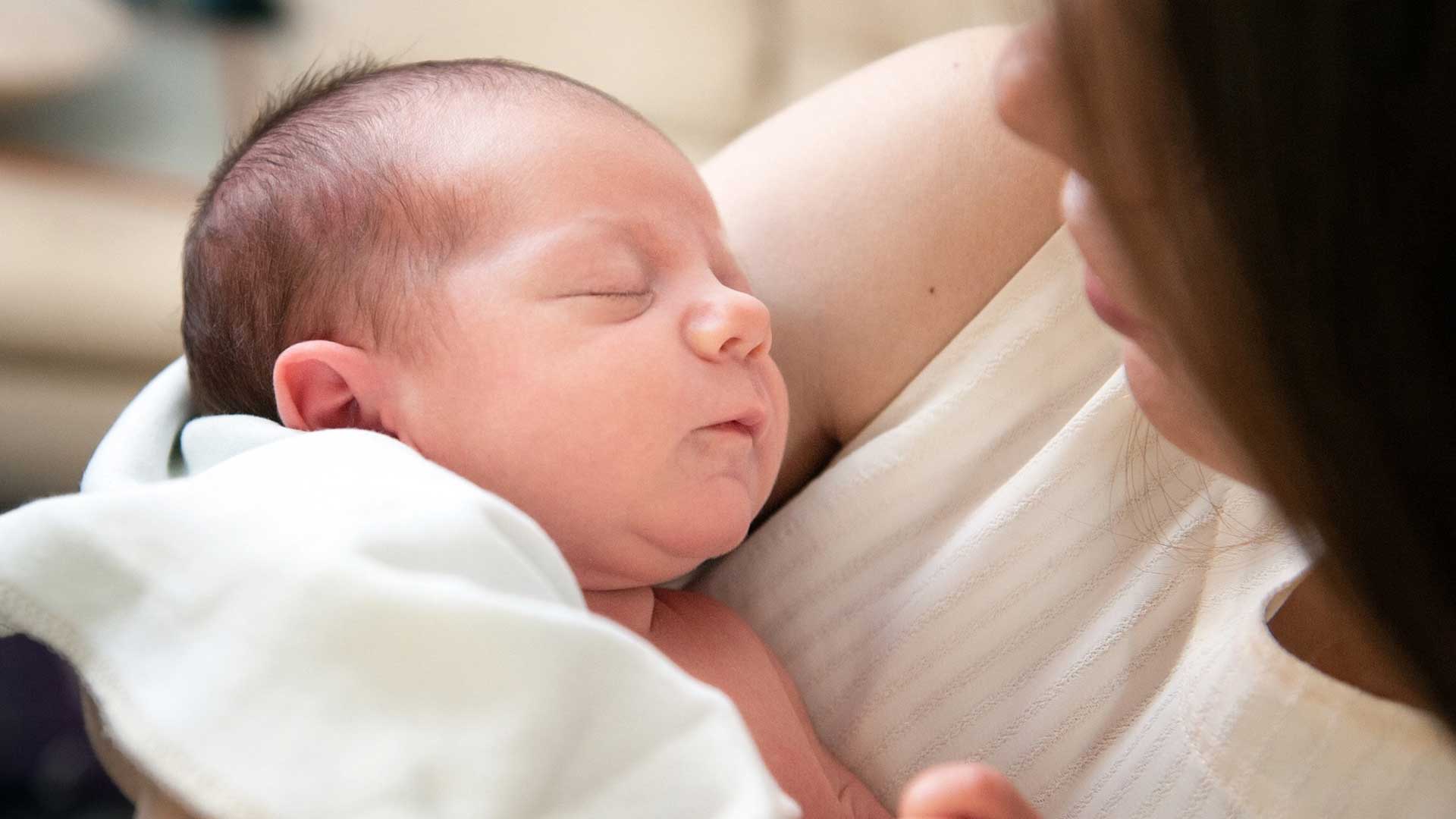
Getting a baby to sleep is no easy feat for some parents. Every little one is different — some are great sleepers and others need more help getting a good rest.
Just like babies are different so is the advice parents get on how to put them asleep — and some of that advice varies between generations.
JaLeigh Monsen, 30, a mother of three, recently made a video with her mother, LeighAnn, 63, about the different advice parents get when raising their kids. She posted it on TikTok.
During the discussion, they found that their parenting styles were similar — no surprise there — but the advice for getting a little on to sleep has changed a lot through the years. (No surprise here either, as people in different generations have sleep differences as well, some evidence shows.)
Baby Sleep Advice Differences by Generation
LeighAnn put all five of her babies to sleep on their stomachs, as was common at the time. Nowadays, the American Academy of Pediatrics (AAP) recommends that parents should lay children on their backs while they sleep to lower the risk of sudden unexpected death.
Funke Afolabi-Brown, MD, triple board-certified sleep physician living in the Philadelphia area, said there are definitely shifts when you look at different generations.
Many changes are a result of the emphasis on safety guidelines and evidence-based practices.
“Advice on how to get babies to sleep has definitely evolved over the past few decades, primarily driven by advances in research, changing cultural norms, and a better understanding of infant development and well-being,” she told Sleepopolis. “Some of the advice includes putting babies on their backs to sleep, avoiding bed sharing. Sleep training practices have also evolved with gentler methods available.”
“Placing babies on their backs and not their stomachs to sleep is largely recommended due to the extensive education and awareness campaigns conducted by organizations like the American Academy of Pediatrics (AAP),” she said. “This is an important recommendation as it helps reduce the risk of SIDS [sudden infant death syndrome], one of the most common causes of death in infants under one year of age.”
“Previous generations placed their babies on the stomachs as they were felt to sleep longer, however with the existing research, the benefits outweigh the risks,” Afolabi-Brown said.
Swaddling is nothing new for newborns, but younger parents may purchase specialized sleep swaddles for their babies nowadays, where the older generation may have simply used a blanket. (Sleep sacks are also on the more recent side.)
What Works in Terms of Getting Babies to Sleep
Not all of the new baby sleep advice is tried and true, so to say.
“One advice that I think doesn’t work includes the fact that there are recommendations to adhere to a rigid sleep schedule,” Afolabi-Brown pointed out. “This is not effective because children have a wide variety of sleep needs which will change with age as well as stage of development.”
Baby Sleep Support
In addition to sleep techniques, a slew of new products have come on the market promising to help parents get their kids to sleep or teach them how to get rest.
For a while, the Fisher-Price Rock and Play was a hit until it was taken off the market for safety concerns. (Parents weren’t buckling their kids in, and some babies rolled over.) The DockATot is a cushioned mat with soft edges that goes into the crib. In 2022, the manufacturer received notice that its product wasn’t safe, either. (It’s still on the market.) Weighted sleep sacks have also gotten a thumbs-down.
“These products typically offer a cushioned, cozy sleeping surface that surrounds the baby, intended to mimic the feeling of being in the womb and provide a sense of security,” Afolabi-Brown said of the DockATot. But the AAP recommends a firm flat surface to reduce the risk of SIDS. “Products like the DockATot, which may have soft padding and raised edges, can pose a suffocation hazard if the baby rolls into the side or becomes trapped against the padding,” she added.
While products may come and go, and different generations may have various advice about how to get a baby to sleep, nothing beats knowing your infant and following your gut. Often times, the same things that our grandparents used — lullabies, gentle touch or reading to the baby—may do the trick.
And if it doesn’t come easy, there’s always sleep training for babies. It may cost a little to bring an expert in (there are plenty nowadays, as well as books), the cost may well be worth it if you can start sleeping through the night, too.

Baby Sleep Training Methods — Ultimate Guide

Best Night Lights You Can Buy Online

Babies Will Change Your Life, But Did You Know They Can Change Your Sleep Chronotpye, Too?

A Comprehensive Guide To Babies And Sleep
Sources
Afolabi-Brown, Funke. Author interview. February 2024.


























